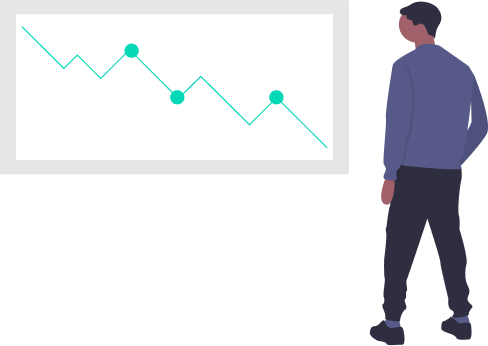Join our community of growth experts and enthusiasts! Get the latest neat-grit in SaaS growth trends, Insider knowledge, and much more direct to your inbox!
Home > SaaS Tribe > Handling chaos in Uncertain Times
With two quarter negative GDP we are technically in the R word. Google has slowed hiring, Microsoft is in laying off mode, we are waiting for it to be officially declared.SaaS Products are receiving increasing funding but how will they look like on the other side of this recession?

Fab.com was an e-commerce company founded in 2010 went from being an unicron to barely alive. In 2011, fab.com growth line was shooting up. They went from raising more than $330m, growing 10m users and valued at $1B+ to revenue shortfalls, massive layoffs and being sold for around $15-30m (one-tenth of its 2013 valuation).
Reason for failure: expanding too quickly to Europe markets before figuring out a good business model.
Another startup Homejoy- a 40 million dollar venture failed after 1 year of raising funds. Homejoy was an online platform which connected customers with home service providers, including house cleaners and handymen.
Daniel Hung, the second full-time engineer to join homestay says “We were spending a lot of money to acquire customers, but not really retaining them.”
Homejoy pushed relentlessly for high growth numbers instead of fixing its poor retention rates.
Retention can build a business but poor retention can be deceptive and it can kill the business.
As a SaaS company grows, naturally the size of subscribers/users who no longer are active customer will also grow. This translates to doubling down on singups from new customers to compensate for loss of revenue.
But revenue can mask what is really happening with product utilization/user engagement. You may generate monthly/yearly revenue from the user but if the user isn’t using your product they can easily churn.
Homejoy could have fixed their problem if they focused on “User engagement on platform”.
Let’s take example from Viddy, a video creation social network tool. In the graph below, blue line shows monthly active user (MAU). It certainly looks impressive, isn’t it?

But if we compare it to the yellow line daily active user (DAU), the graph doesn’t look promising.

What we see here that for the short term, company and the investors can be tricked into believing recurring revenue to be the right metrics for growth.
But in reality, the actual story from the same user data will give total different narrative about where the business is heading to.
Homejoy focused on acquiring more customers and quickly expanded to canada and europe too quickly.
Even though a paying subscriber gives you a month’s or a year’s worth of money, if they aren’t using the product, they will stop paying after the month or year is up.
It is quite tough to get a paying subscriber back once they have left. Focus on usage retention first if you want to increase retention. Don’t fall into the trap of tracking wrong metrics.
